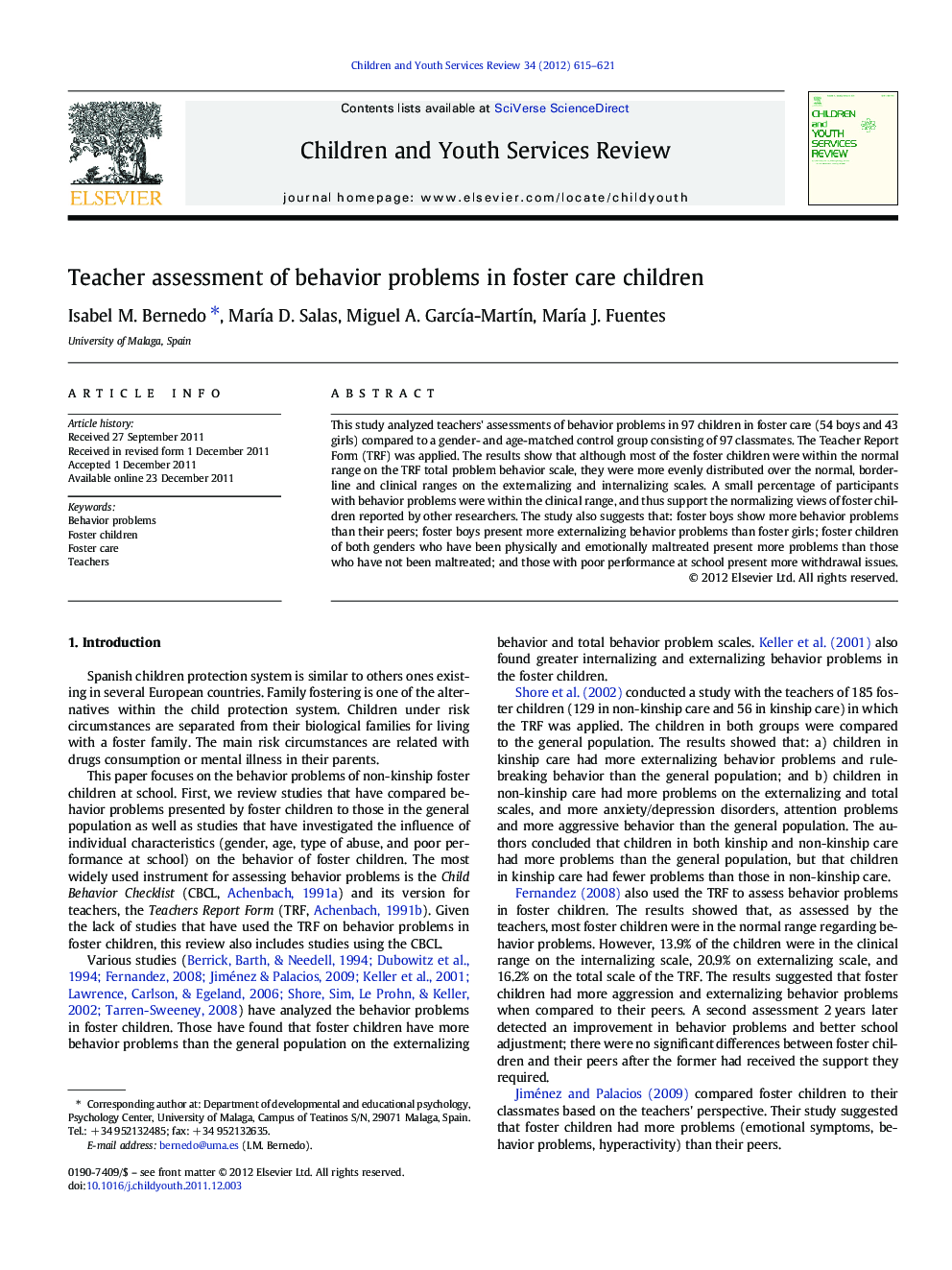| Article ID | Journal | Published Year | Pages | File Type |
|---|---|---|---|---|
| 347000 | Children and Youth Services Review | 2012 | 7 Pages |
This study analyzed teachers' assessments of behavior problems in 97 children in foster care (54 boys and 43 girls) compared to a gender- and age-matched control group consisting of 97 classmates. The Teacher Report Form (TRF) was applied. The results show that although most of the foster children were within the normal range on the TRF total problem behavior scale, they were more evenly distributed over the normal, borderline and clinical ranges on the externalizing and internalizing scales. A small percentage of participants with behavior problems were within the clinical range, and thus support the normalizing views of foster children reported by other researchers. The study also suggests that: foster boys show more behavior problems than their peers; foster boys present more externalizing behavior problems than foster girls; foster children of both genders who have been physically and emotionally maltreated present more problems than those who have not been maltreated; and those with poor performance at school present more withdrawal issues.
► A small percentage of foster children show behavioral problems. ► Foster boys show more behavior problems than their peers. ► Foster boys present more externalizing problems than foster girls. ► Exposure to physical and emotional maltreatment is related to behavior problems. ► Poor performance at school is associated with more behavior problems.
